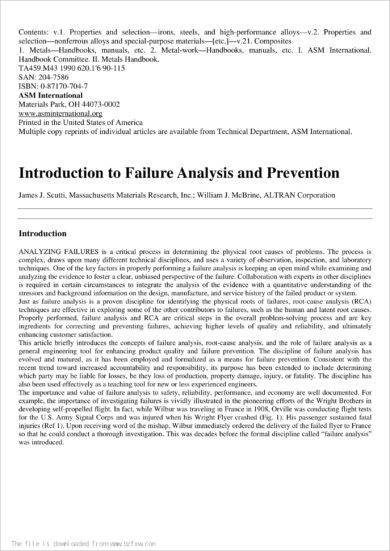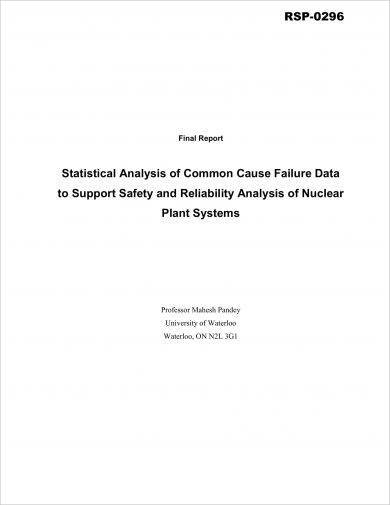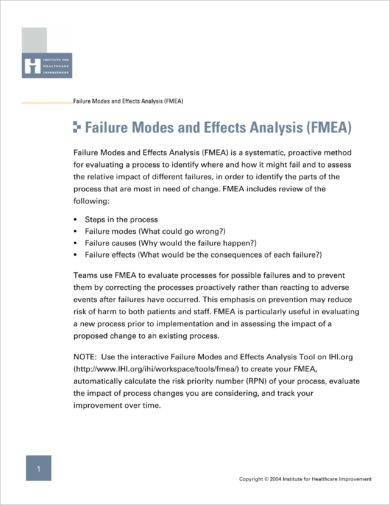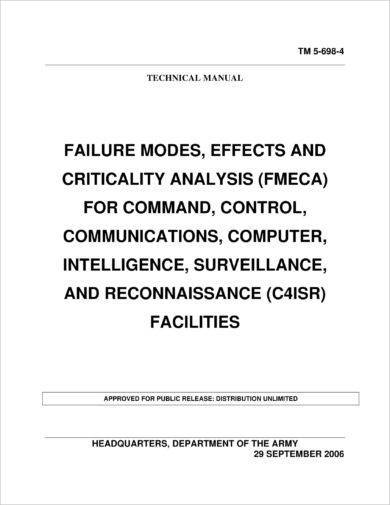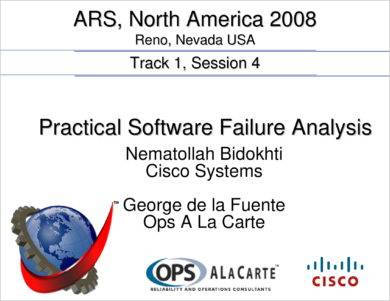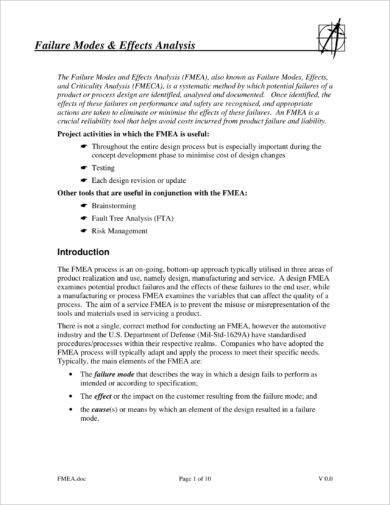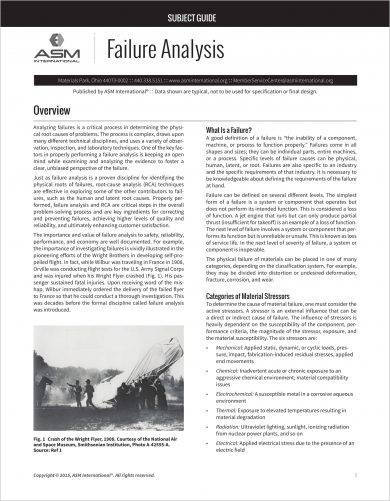10+ Failure Analysis Examples to Download
No business is perfect, hence the creation and usage of business SWOT analysis examples to know the factors and elements that either contribute to or hinder a company’s successes. Identifying causes of failures is very important to every businesses.
As a corporate entity, you need to have an idea on why a product failed when comparing its expected and actual sales. More so, you need to be aware of the reasons why some general policies or even materials and equipment did not work the way you would like them to.
FMEA Analysis Example
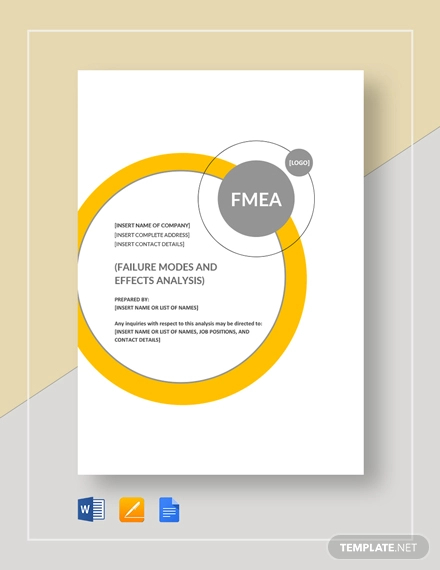
Failure Analysis and Prevention Example
Being knowledgeable of your business’s failures and the reasons behind them is a great way for you to work on your weaknesses and shortcomings. If you want to take corrective actions, address concerns and issues, and better the performance or any activity of your business, one of the first things that you need to do is develop a failure analysis. You may also see statement analysis examples.
Being able to create a comprehensive failure analysis can help your business a lot. If you need help or guidance when it comes to the development of this document, you came to the right place as we have put together several examples of failure analysis that can be used in different instances and circumstances. Browse through and download these examples so you can have references whenever you plan to start the drafting processes of your failure analysis.
Statistical Analysis of Common Cause Failure Data Example
Why Do You Need to Conduct Failure Analysis?
Failure analysis is a complex, critical, and multi-disciplinary process. As an important tool for managing and operating establishments and companies, this document can be included in a hotel SWOT analysis or any failure reports and assessments of businesses from various industries and fields of corporate expertise.
There are different kinds of activities, factors, and elements that you have to look into so that you can ensure the efficiency and effectiveness of the undertaking. Once you have already mastered the execution of failure analysis, you can have a lot of advantages that can result to the improvement of your overall business operations and management. You may also see customer analysis examples.
Listed below are some of the reasons why we highly recommend the creation and implementation of failure analysis within your organization.
1. Failure analysis can help you determine the necessary corrective actions that you can use so that you can ensure that the business can receive the least impact from your failures. It is very important for you to ensure the core or the main reason of your failures so that your counteractions can truly address the issues at hand. You may also like company analysis examples.
2. Failure analysis can help you save your business’s time, money, and effort. If you can identify reasons or causes of failures at the earliest possible time, then you can reduce your financial costs which are allocated for product recalls, service corrections, and other failure-related results.
3. Failure analysis can give higher chances of eliminating risks and its potential impacts. This is mostly applicable for your future operations as you can already look into the failures that the business has undergone within its previous operations. With this, you can be more prepared when facing threats or any other unforeseen circumstances that can possibly harm your organization. You might want to know what an analysis is.
4. Failure analysis promotes failure ownership. You have to identify the entities who are involved in the failures of the business and its operations. This will allow you to know whether these individuals are truly fit to do the job or there are other factors that can affect their performance efficiency during operations like the condition of the materials and equipment that they are using. You may also see sales analysis examples.
5. Failure analysis can make it more efficient for you if you want to check or monitor your quality standards and how these standards are implemented in your operations. Aside from ensuring that you are meeting your quality standard measures, failure analysis can also reflect your ability to meet the regulatory standards that are set by external entities for your business to continue its operations or participate in specific corporate and business activities like product exporting. You may also like market analysis examples.
6. Failure analysis is a process that can allow your business to be more efficient in relation to its manufacturing processes and other activities. Once you already know what your weak spots are, it will be easier for you to develop training programs and development tactics that can affect the performance of your workforce and the entire business. You may also check out industry analysis examples.
Comprehensive Failure Modes and Effects Analysis Example
Design Failure Mode and Effects Analysis Example
Failure Mode Effects Analysis Example
Benefits of Using Failure Analysis
How to prepare a SWOT analysis for your business should not be your only focus if you want to maintain the effectiveness of your work processes. You also have to look into the failures that you went through and the reasons why you experienced them.
The failures of your business can provide you with lessons that you can use for the betterment of your corporate condition. If your business will have a failure analysis that can be implemented within particular time duration, here are some of the benefits that your stakeholders and operations can experience:
1. Having a standard process for failure analysis can help you identify the proper ways on how you can look into and observe failures. This can show trends when it comes to the kinds or types of failures that have occurred in your operations and the underlying reason behind all of them. Through this, you can prepare measures that can lessen the potential of failure repetition. You may also see literary analysis examples.
2. Creating a failure analysis document can give focus to key persons when it is already needed to check physical signs and symptoms of failure. With this, failure assessment can be more in-depth, which is a great way for your organization to understand how you have acquired these failures or how malfunctions existed within the different areas or materials on your operations. You may also like needs analysis examples.
3. Coming up with a detailed failure analysis process can organize the steps that are needed to be taken from the collection of failure effect evidences up to the simple assessment of each failure’s root causes. If you will have a team that is well-guided when it comes to executing a failure analysis, then you can fully determine the core of failure existence.
This can then result to the proper development of call-to-actions and strategies that can help your business to either prepare for threat impacts or create failure resolutions.
Failure Modes, Effects, and Criticality Analysis Example
Basic Failure Mode and Effects Analysis Example
Practical Software Failure Analysis Example
Things to Remember When Developing and Conducting Failure Analysis
Failure analysis is a process that you should develop per situation. You have to be reminded that there are different causes of failures and there are also different ways on how you can identify them. With this, you have to be careful when developing and conducting failure analysis as your steps and methods can affect the effectiveness of the document that you will be making. You may also see operational analysis examples.
Here are some of the factors that you have to look into if you want to come up with a highly functional, usable, and strong failure analysis:
1. Just like when developing a needs analysis, you should be aware of the goal or objective that you would like to achieve if you want to start the creation and more so the implementation of a failure analysis. You have to ensure that you are guided by a number of principles that are centered in achieving the reason why there is a need for failure analysis to be implemented.
Ask yourself about the purpose of your failure analysis. Is it for developing corrective actions or is it for liability and ownership to be given to entities involved? Knowing why you want to conduct failure analysis can help you become more focused and directed with the end goal or vision that you have in mind.
2. Ensure that you will have an idea of the benefits that you can get from conducting failure analysis. You also have to let your stakeholders be aware of these benefits or advantages so they can understand the reason why you have to develop a failure analysis process and document. You may also like requirements analysis examples.
More so, having an open communication about this matter can persuade your stakeholders on why it is essential for them to participate in particular activities that are failure analysis related.
3. Be mindful of the causes and effects of failures. You are immersing in an undertaking where there is a relevant reaction chain that interlinks a number of elements that contribute to the failure of the business. With this, you should not just look into the surface of deficiencies and errors. You also have to be aware of the implications of the things that allow these failures to materialize. You may also check out organizational analysis examples.
4. Make sure that you are prepared when it comes to handling, identifying, and collecting the components and other items that are relevant and necessary in failure analysis.
The examination of your failures must have resources that are credible and firsthand. This can ensure you and the other entities involved in the activity that the causes of your failures are identified accordingly and that there are proper measures considered when creating your tactics and plans for any corrective actions needed. You might be interested in financial analysis examples.
Failure Modes and Effects Analysis Example
Failure Analysis Example
Tips for Failure Analysis Development and Usage
Fault tree analysis, failure analysis, and other kinds of analysis documents used by businesses are very important as they can provide a thorough explanation and in-depth view of the details that organizations should look into to address certain concerns or develop particular activities. A few of the tips that can give you an idea on how to maximize the usage and potential of the failure analysis that you will come up with are as follows:
1. Be organized when developing and using failure analysis. Use organizational tools that can help you take proper actions and arrange the processes that your stakeholders will immerse in so that you can fully maximize the benefits and advantages that you can get from the document’s appropriate and timely usage. You may also see SWOT analysis examples.
2. Ensure that the failure analysis content is direct to the point, specific, and brief. This will help you easily report your findings especially when you need to have a discussion with the management of the business and other entities involved. Aside from this, you also have to make sure that your failure analysis contains information that are detailed and updated.
3. Review and evaluate the final version of your failure analysis. This is very important before you use the document as a guide for the development of new products and processes or for your preparations when creating new protocols, action plans, regulations, and corrective measures related to the failure being discussed in the document.
4. Use references like existing failure analysis examples, document templates, format guides, and failure analysis skeletal examples. However, you should always remember that not all failure analysis work in the same manner and you have to tweak several details of these references so that their usages can fully fit your needs and requirements. You may also see regression analysis examples.
Make the most out of the templates and examples that we have listed in this post. Ensure that you will look into the development of an effective failure analysis document that will allow your business to not only identify failures but assess how these failures existed and how they can affect your operations as well. You may also like feasibility analysis examples.
Download any or even all of our failure analysis examples and incorporate their usages in your action plan once you have already decided to make a failure analysis for your business or organization.



